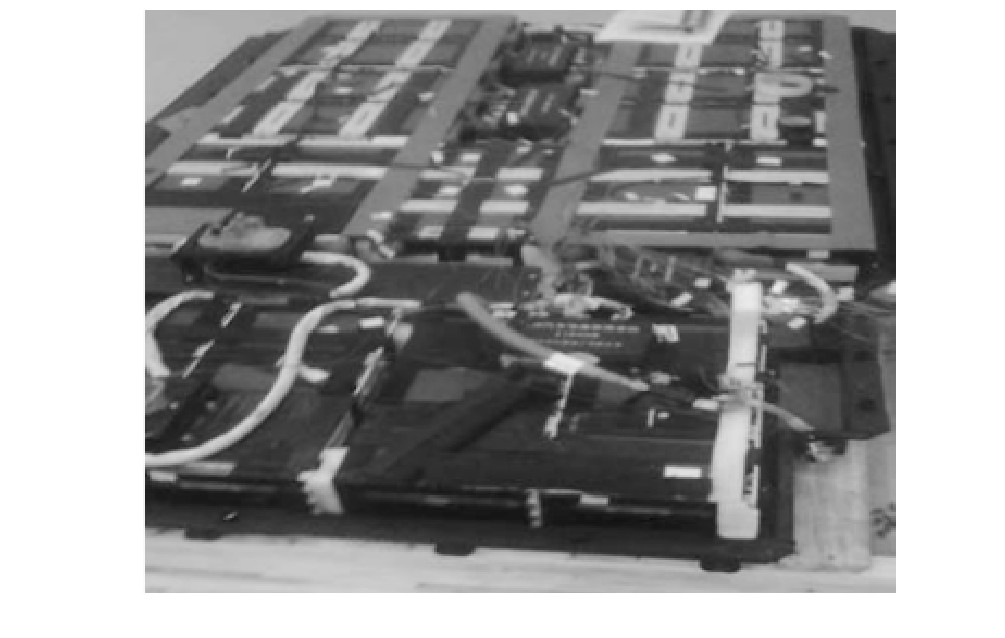| [1] |
WILLIFORD R E, VISWANATHAN V V, ZHANG Ji-guang. Effects of entropy changes in anodes and cathodes on the thermal behavior of lithium ion batteries[J]. Journal of Power Sources, 2009, 189(1): 101-107. doi: 10.1016/j.jpowsour.2008.10.078
|
| [2] |
SAITO Y. Thermal behaviors of lithium-ion batteries during high-rate pulse cycling[J]. Journal of Power Sources, 2005, 146(1): 770-774. https://www.sciencedirect.com/science/article/pii/S0378775305005008
|
| [3] |
SELMAN J R, AL HALLAJ S, UCHIDA I, et al. Cooperative research on safety fundamentals of lithium batteries[J]. Journal of Power Sources, 2001, 97: 726-732. https://www.sciencedirect.com/science/article/pii/S0378775301007327
|
| [4] |
KIZILEL R, SABBAH R, SELMAN J R, et al. An alternative cooling system to enhance the safety of Li-ion battery packs[J]. Journal of Power Sources, 2009, 194(2): 1105-1112. doi: 10.1016/j.jpowsour.2009.06.074
|
| [5] |
HAMUT H S, DINCER I, NATERER G F. Analysis and optimization of hybrid electric vehicle thermal management systems[J]. Journal of Power Sources, 2014, 247: 643-654. doi: 10.1016/j.jpowsour.2013.08.131
|
| [6] |
FAN Li-wu, KHODADADI J M, PESARAN A A. A parametric study on thermal management of an air-cooled lithium-ion battery module for plug-in hybrid electric vehicles[J]. Journal of Power Sources, 2013, 238: 301-312. doi: 10.1016/j.jpowsour.2013.03.050
|
| [7] |
RAO Zhong-hao, WANG Shuang-feng, WU Mao-chun, et al. Experimental investigation on thermal management of electric vehicle battery with heat pipe[J]. Energy Conversion and Management, 2013, 65: 92-97. doi: 10.1016/j.enconman.2012.08.014
|
| [8] |
JAVANI N, DINCER I, NATERER G F. Thermodynamic analysis of waste heat recovery for cooling systems in hybrid and electric vehicles[J]. Energy, 2012, 46(1): 109-116. doi: 10.1016/j.energy.2012.02.027
|
| [9] |
BALAKRISHNAN P G, RAMESH R, KUMAR T P. Safety mechanisms in lithium-ion batteries[J]. Journal of Power Sources, 2006, 155(2): 401-414. https://www.sciencedirect.com/science/article/pii/S0378775305016629
|
| [10] |
ONDA K, OHSHIMA T, NAKAYAMA M, et al. Thermal behavior of small lithium-ion battery during rapid charge and discharge cycles[J]. Journal of Power Sources, 2006, 158(1): 535-542. doi: 10.1016/j.jpowsour.2005.08.049
|
| [11] |
BUCHMAN I. Batteries in a Portable World: a Handbook on Rechargeable Batteries for Non-Engineers[M]. Richmond: Cadex Electronics Inc., 2001.
|
| [12] |
BAPTISTA P, TOMÁS M, SILVA C. Plug-in hybrid fuel cell vehicles market penetration scenarios[J]. International Journal of Hydrogen Energy, 2010, 35(18): 10024-10030. doi: 10.1016/j.ijhydene.2010.01.086
|
| [13] |
AVADIKYAN A, LLERENA P. A real options reasoning approach to hybrid vehicle investments[J]. Technological Forecasting and Social Change, 2010, 77(4): 649-661. doi: 10.1016/j.techfore.2009.12.002
|
| [14] |
CHACKO S, CHUNG Y M. Thermal modelling of Li-ion polymer battery for electric vehicle drive cycles[J]. Journal of Power Sources, 2012, 213: 296-303. doi: 10.1016/j.jpowsour.2012.04.015
|
| [15] |
KIM U S, YI J, SHIN C B, et al. Modelling the thermal behaviour of a lithium-ion battery during charge[J]. Journal of Power Sources, 2011, 196(11): 5115-5121. doi: 10.1016/j.jpowsour.2011.01.103
|
| [16] |
SAW L H, YE Y, TAY A A O. Electro-thermal analysis and integration issues of lithium ion battery for electric vehicles[J]. Applied Energy, 2014, 131: 97-107. https://www.sciencedirect.com/science/article/pii/S0306261914005984
|
| [17] |
KISE M, YOSHIOKA S, HAMANO K, et al. Development of new safe electrode for lithium rechargeable battery[J]. Journal of Power Sources, 2005, 146(1/2): 775-778. https://www.sciencedirect.com/science/article/pii/S0378775305005033
|
| [18] |
INUI Y, KOBAYASHI Y, WATANABE Y, et al. Simulation of temperature distribution in cylindrical and prismatic lithium ion secondary batteries[J]. Energy Conversion and Management, 2007, 48(7): 2103-2109. https://www.sciencedirect.com/science/article/pii/S0196890407000039
|
| [19] |
PARK C, JAURA A K. Dynamic thermal model of Li-ion battery for predictive behavior in hybrid and fuel cell vehicles[J]. SAE Technical Paper, 2003-01-2286. https://www.sae.org/publications/technical-papers/content/2003-01-2286/
|
| [20] |
MOTLOCH C G, CHRISTOPHERSEN J P, BELT J R, et al. High-power battery testing procedures and analytical methodologies for HEV's[J]. SAE Technical Paper, 2002-01-1950. https://www.sae.org/publications/technical-papers/content/2002-01-1950/
|
| [21] |
CHEN Y, EVANS J W. Three-dimensional thermal modeling of lithium-polymer batteries under galvanostatic discharge and dynamic power profile[J]. Journal of the Electrochemical Society, 1994, 141(11): 2947-2955. https://citeseerx.ist.psu.edu/viewdoc/download?doi=10.1.1.824.7700&rep=rep1&type=pdf
|
| [22] |
BERNARDI D, PAWLIKOWSKI E, NEWMAN J. A general energy balance for battery systems[J]. Journal of the Electrochemical Society, 1985, 132(1): 5-12. https://escholarship.org/uc/item/9fx5f0h8
|
| [23] |
RAJAMANI R. Vehicle Dynamics and Control[M]. Berlin: Springer, 2011.
|





 下载:
下载:















